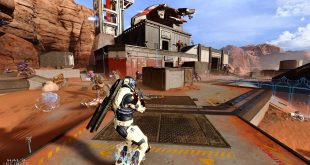During its “Xtreme Innovation” event this week, Adata unveiled a slew of upcoming PC hardware, including DDR5 memory, new SSDs, laptops and even gaming peripherals. The highlight of course is the new DDR5 memory module, which is capable of hitting speeds up to 12600MT/s.
During the event, Adata unveiled specifications for its DDR5 memory. Offering 2x the capacity of DDR4 modules, up to 12600MT/s speeds, ECC, and voltages as low as 1.1V, Adata's DDR5 modules will provide better performance all-round. At the moment, Intel and AMD have not released DDR5-compatible chipsets, but the first is expected to arrive before the end of this year.
Adata also showed two new SSDs. The first is the Legend PCIe 4.0 SSD, aimed at creators and offering read speeds of up to 7400MB/s, and the second is the SE920 USB4 external SSD, capable of transferring files at 4000MB/s speeds. Another storage device mentioned was the Premier Extreme SDXC SD7.0 PCIe memory card, which uses a PCIe Gen3x1 interface to achieve 800/700MB/s read and write speeds.
In the laptop department, Adata is releasing the Xenia 14 and Xenia 15 gaming ultrabooks. The Xenia 14 is equipped with an 11th Gen Intel Core i5 or i7 CPU, 16GB of XPG DDR4 memory, and a 512GB XPG PCIe 4.0 SSD. Thanks to its magnesium alloy chassis, the Xenia 14 weighs just 970g. Battery life should last up to 10 hours, and for connectivity, there are 2x USB-C ports, 2x USB-A ports, an HDMI port, an SD card reader, a 3.5mm audio jack, and Thunderbolt 4 support.
As for the Xenia 15 laptop, it will pack an Intel Tiger Lake H 11th Gen i7 processor, an Nvidia GeForce RTX 3060/3070 GPU, 32GB of XPG DDR4 memory, and a 1TB XPG PCIe 4.0 SSD. Similar to the Xenia 14, the body is also made of magnesium alloy, with the laptop weighing just under 2Kg. Moreover, it will feature a mechanical keyboard with per-key RGB lighting, a 15.6-inch 165Hz QHD display, and support for Thunderbolt 4.
The XPG Precog Aero wireless gaming headset was also present, aiming to provide low-latency audio when using the 2.4GHz USB-C dongle. Battery life appears to be solid too, offering up to 24 hours of use on a full charge. However, you can also connect the headset using the included USB cable for a wired connection. Other features include replaceable ear caps, slanted ear cushions, and customisable RGB lighting via XPG Prime software.
Lastly, if power supplies are your thing, Adata has expanded its line-up of XPG Cybercore Platinum units to include 850W and 1000W PSUs.
Discuss on our Facebook page, HERE.
KitGuru says: Our eyes were drawn to Adata's DDR5 memory, but what interested you the most out of all the announcements?
 KitGuru KitGuru.net – Tech News | Hardware News | Hardware Reviews | IOS | Mobile | Gaming | Graphics Cards
KitGuru KitGuru.net – Tech News | Hardware News | Hardware Reviews | IOS | Mobile | Gaming | Graphics Cards


